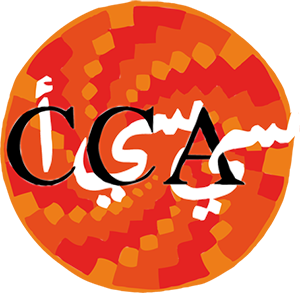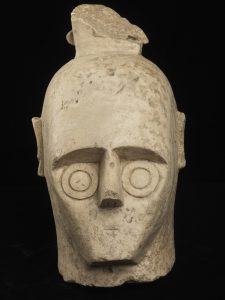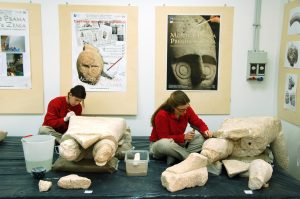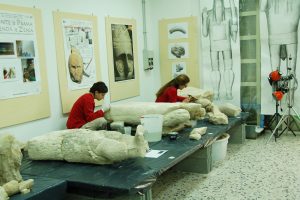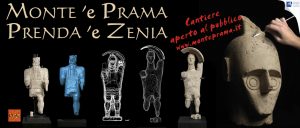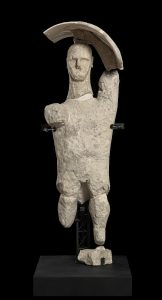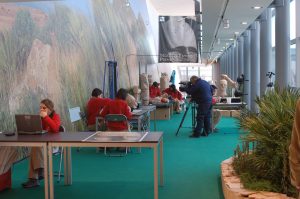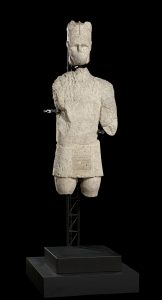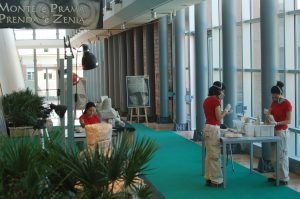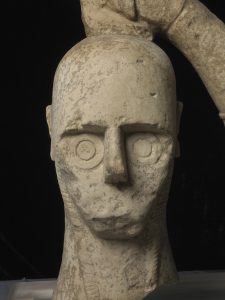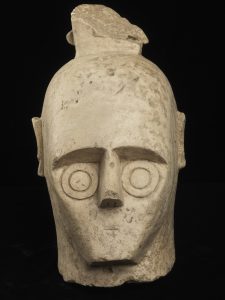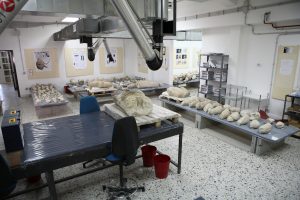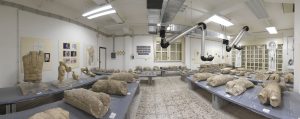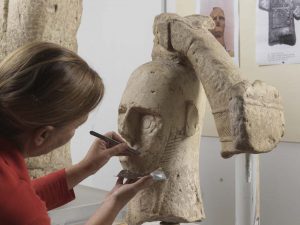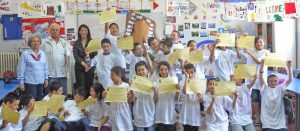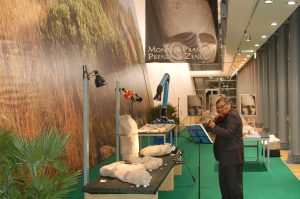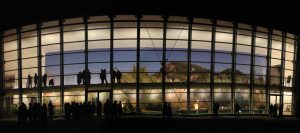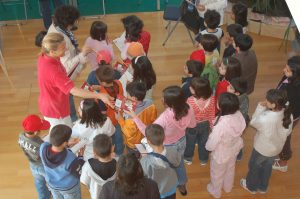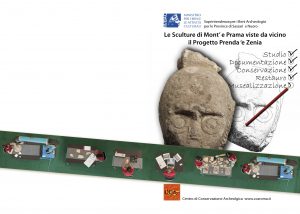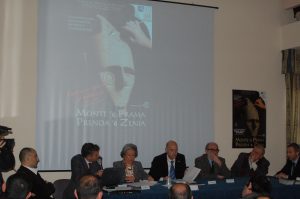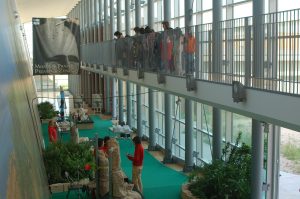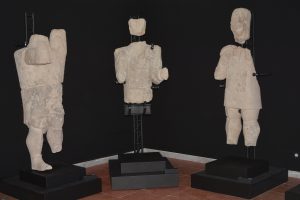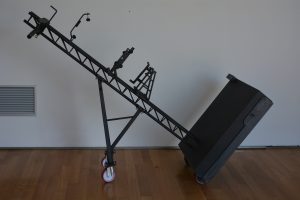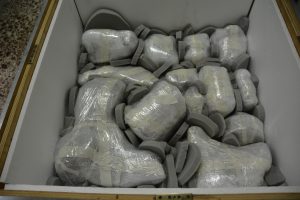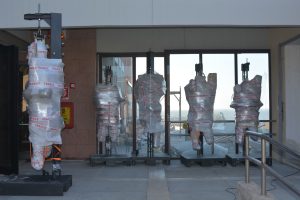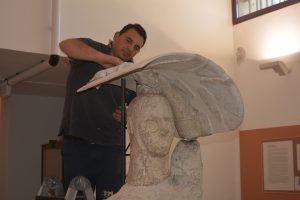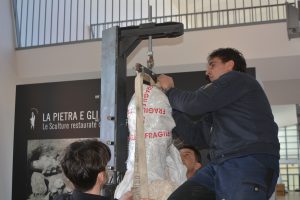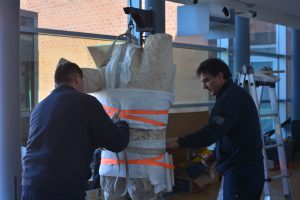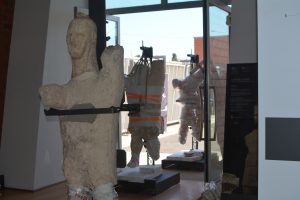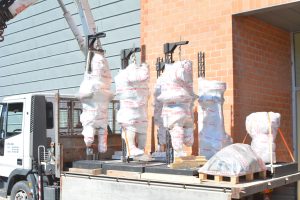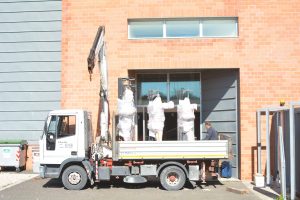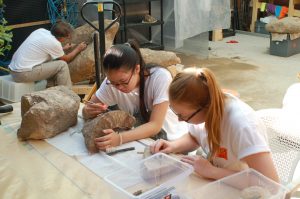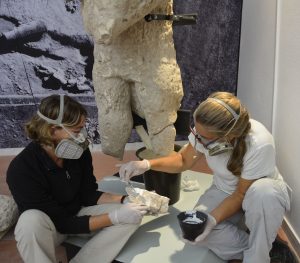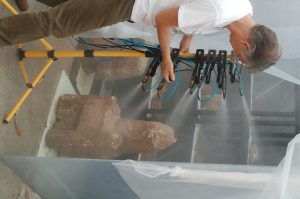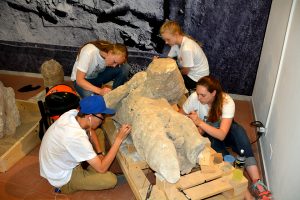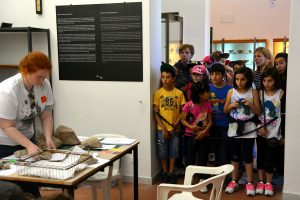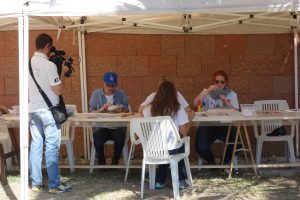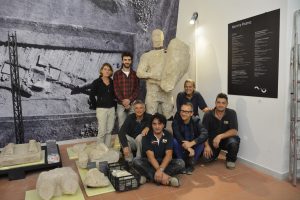Conservation Project 2007-2011 – Mont’e Prama
In the 1970s, an incredible group of stone fragments representing archers, boxers, warriors and nuraghe models was retrieved from the funerary and sacred area of Monte ‘e Prama, Cabras, Oristano. The typology of the fragments, their quantity, as well as their conservation condition, make this discovery one of the most important cultural events of the end of this millennium, both on a regional and on a national level. The statues are the expression of a civilization that has no comparison in the whole western Mediterranean basin, and they cast a new light on the art and culture of Sardinian populations.
In 2007 the program of documentation, conservation, restoration and museum display of the Monte ‘e Prama sculptures started. It was a cultural multidisciplinary program aiming to join together the aspects of conservation and restoration, of public engagement and of communication on a regional, national and international level.
The whole operation has been documented accurately in all its phases. The data gathering has taken place through four different channels: photographic, video, graphic and 3D scanning. The big amount of information had been stored and managed through a digital Database.
The intervention has involved the following phases:
Cleaning in a water mist chamber: the water is transformed in mist with a low pressure and low concentration, so to be able to keep the removal of deposits under control.
Consolidation of fractured surfaces, to improve their performances during the joining of fragments.
Looking for joints. The time-consuming and complex operation was patiently carried out by CCA conservators. According to iconographic criteria, to conservation condition and to decoration techniques, more than 1200 fragments were assembled out of the original 5178 fragments. More than 400 of those compose the sculptures mounted on the supports.
Mounting: the fragments that had contact surfaces were joined by gluing with epoxy resin and by an external metal support. Indeed, the methodological principle applied was to not pierce new holes in the sculptures. The fragments not adjoining with the sculpture, but related to it, were mounted on the support individually. The same happened for the fragments attributed to a sculpture, in an increasing scale of certainty.
Finally, all the fractures, the fissures and the joints between the different fragments were filled with lime-based mortar.
1. Work in the Li Punti Gallery
2. A view of the laboratory
3. Working in the laboratory
4. Sampling for scientific analysis
5. Two of the statues on supports
6. Two heads of the sculptures
